We are constantly being told these days growing our own food is just so easy that everyone should be doing it. As an eco-gardener my inability to feed my family out of my own garden left me feeling somewhat inadequate. No, actually I felt like a total failure. My husband doesn’t like vegetables much so he is quite happy for me to not grow them and for years kept telling me to just grow flowers instead.
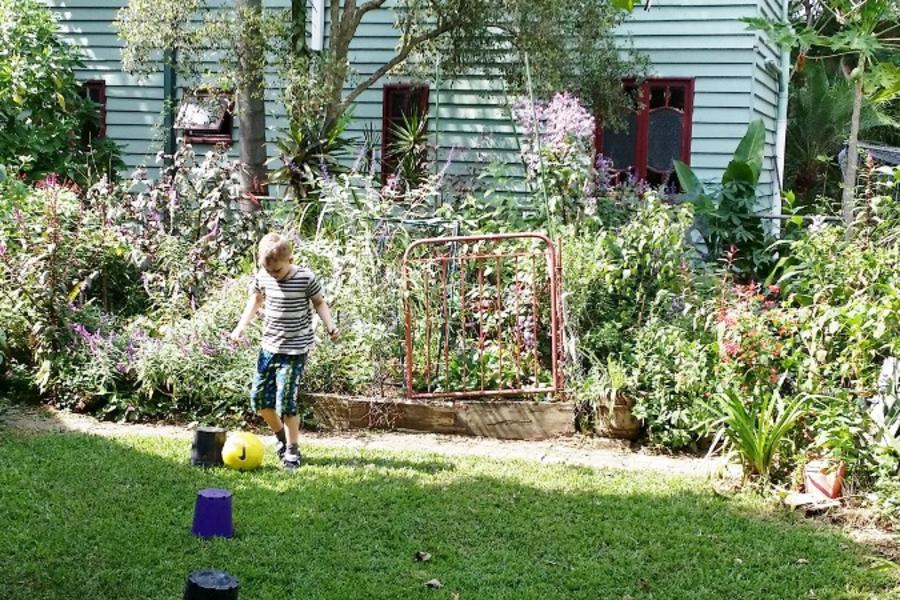
The vegetable garden has been converted into a perennial flower garden and we couldn’t be happier!
When I gave up on the vege patch and just grew flowers instead, I became a much happier and contented gardener. And found I had no less food in the garden for the loss of my unsuccessful vege patch. What went wrong? Well, I had good soil, I picked the sunniest spot in my winter garden, it was fenced to keep out the possums and turkeys, and it was planted full of wonderful heirloom seeds. Those poor, wonderful seeds didn’t stand a chance. I think most of them got eaten by mice. I cannot figure out why my garden is full of mice, even well away from the chook pen, except that there are plenty of things flowering and seeding, so there is plenty of food I guess!
But the main reason for the failure of my veg is very simple – I didn’t water them enough and I certainly didn’t fertilise them enough. I am a very busy full time consulting gardener. I spend my days working in clients’ gardens, then the family takes what they need, and what is left of me at the end of all that is what my garden gets. Not an uncommon story in this busy modern world. Veges might be reasonably easy to grow, but they do need regular small amounts of attention, and that is not always easy to give.
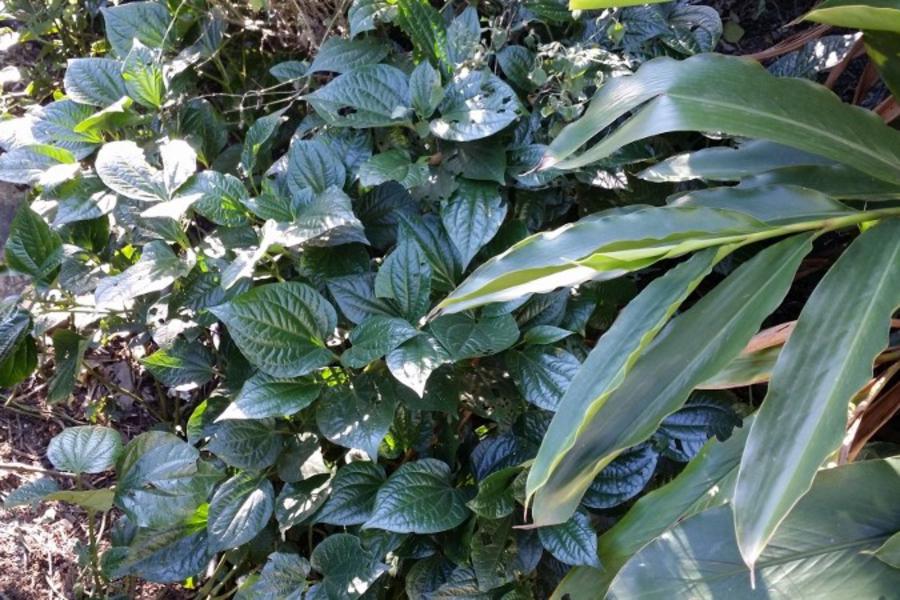
Betel leaf, Piper sermentosum
But that is not to say there is nothing to eat in my garden, far from it. I have cranberry hibiscus because it is a highly ornamental shrub that also happens to be delicious. The aibika and sweet leaf are also shrubs that need very little attention and while they are not as ornamental as the red leaves of the cranberry hibiscus, they fit easily into an informal sub-tropical garden, as does the betel leaf as a ground cover with its glossy green edible leaves.
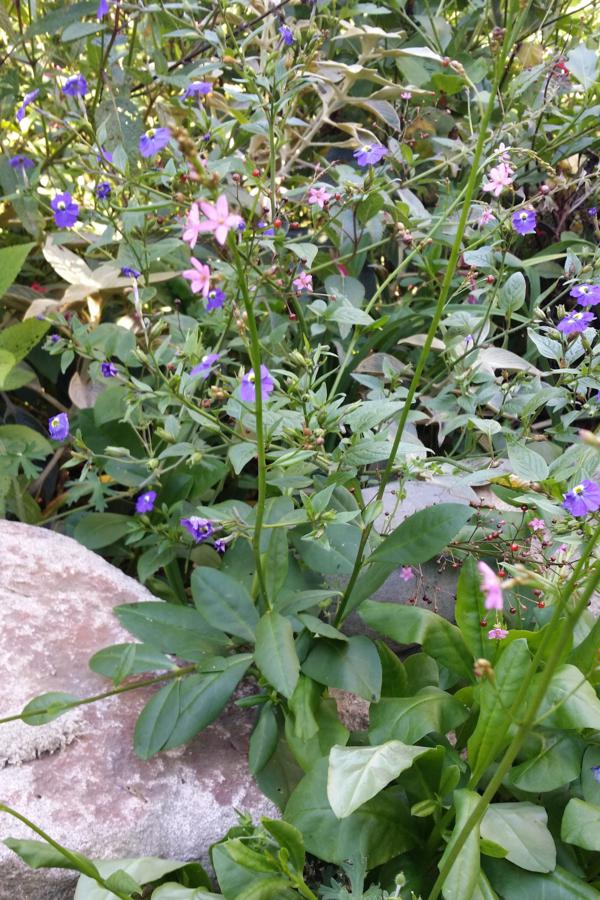
Talinum paniculatum (pink flowers) tucked in with the Chinese forget-me-nots
The Talinum paniculatum is a weed – literally! But a weed that is very pretty, and highly nutritious, so it is allowed to stay and gets weeded into dinner often. In winter I have nasturtiums and chick weed in such abundance that they are weeds and also get weeded into dinner.
Eating the weeds makes growing vegetables easy. Sure it is not cucumbers and carrots, but it is food so is making a contribution. It also means healthy fresh greens are always on hand, and my eco-conscience is clear. I am eating my weeds, so I can tick the “grow some food” box! Actually some of these greens are far more nutritious than what is on offer at the supermarket, so there is another win for the family. My son will happily eat a handful of chickweed directly from the garden, and we call it our daily multivitamin. Many of these plants have exceptionally valuable health giving benefits which make the “superfoods” look like poor cousins.
I also have Brasilian spinach, basil, parsley, mushroom plant and shallots (grown from the cut ends of store bought shallots) in a window box on my kitchen window. It’s not a lot, but it is bits that are easy to grab and add in to a meal.
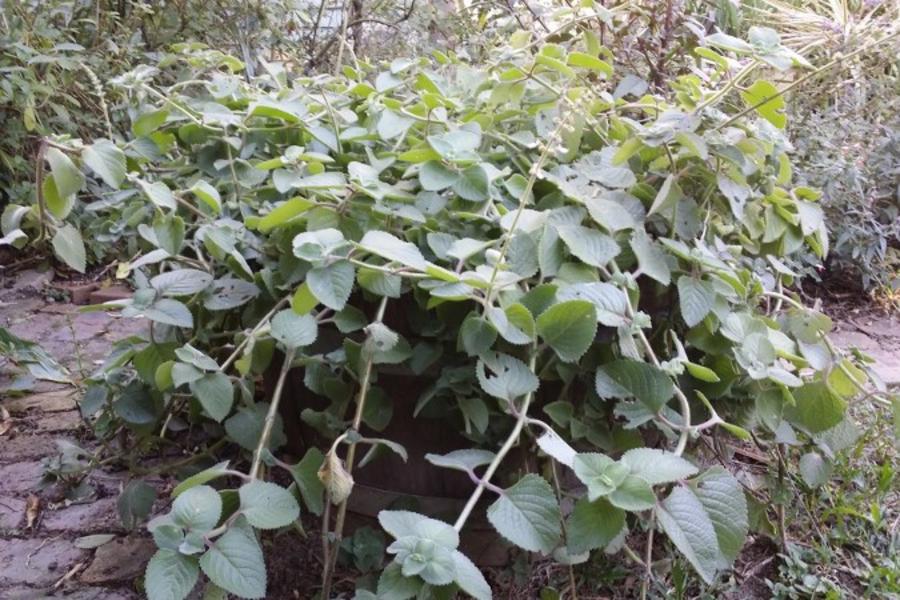
All Herb, Plectranthus amboinicus
Out in the garden there is my favourite herb – all herb! This one is so easy to grow that a piece dropped on the ground grew, and it has the advantage of being able to be substituted for any of the Italian herbs in a meal, making it not only easy to grow, but very handy too. I have given pots of this to the most brown-thumbed friends and they too feel good about growing something they can cook with which is a complete no-brainer. All herb is a plectranthus and not only culinary but also medicinal. It can be used for insomnia, very effectively, so I add a bit extra to the meals to get everyone (me!) to sleep better! It is also a natural insect repellent…very useful indeed.
Basil and chillies come up in my cottage garden and are allowed to stay there. The cherry tomatoes always taste better when growing in the wrong place for some reason, so they get tolerated among the salvias until they get too messy and have to go. The wampi feeds the possums rather than us, and the bats get most of the paw paws, but we do get a few figs and bananas and there is turmeric galore.
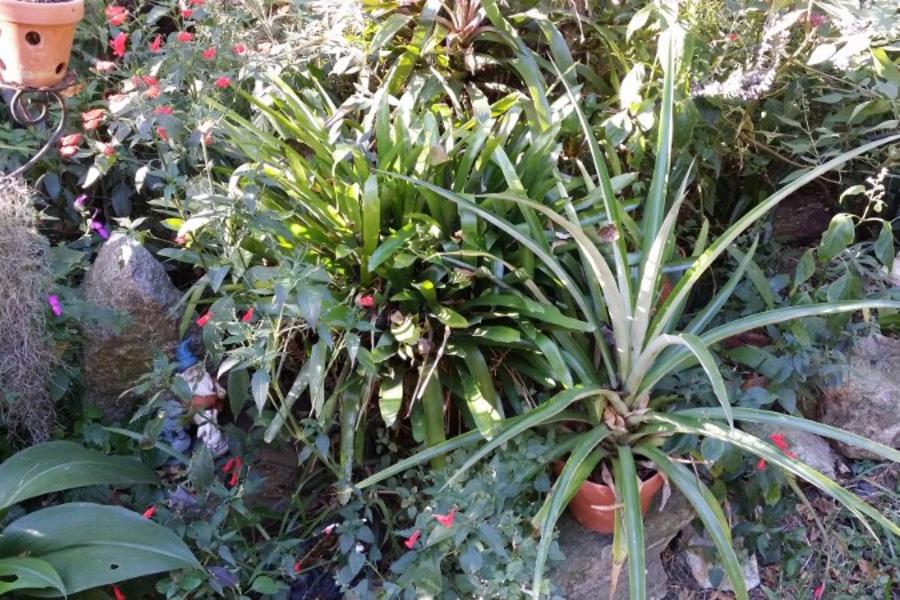
Pineapple plant tucked into the ornamental garden
I harvested my first pineapple today (yes of course grown from tops from pineapples bought with the tops on!) and have my first flowers on the dragon fruit which I am excited about as well. There is also a passionfruit vine on the chook pen and a mulberry tree and an acerola cherry tree inside the chook pen, so I feel like I am doing more than nothing when it comes to eating from the garden – not much more than nothing as they get no care and fruit is something to get excited about. And let’s not forget the comfrey and aloe – my medicine chest in the dirt!
Overall though, my garden is not an edible garden. It is a massive celebration of flowers – of sub-tropical cottage gardening and shade loving sub-tropical flowers. It is a garden which has enormous diversity both of plants and insects. It provides clean air, stores carbon, supports wildlife and is a wonderful, healthy, living space to be in and raise a family in. The sustainability value of a garden goes well beyond growing food, and yet being able to tuck a few bits of food into an ornamental garden is a true joy, and those things that feed me while I neglect them are without doubt my favourites!
